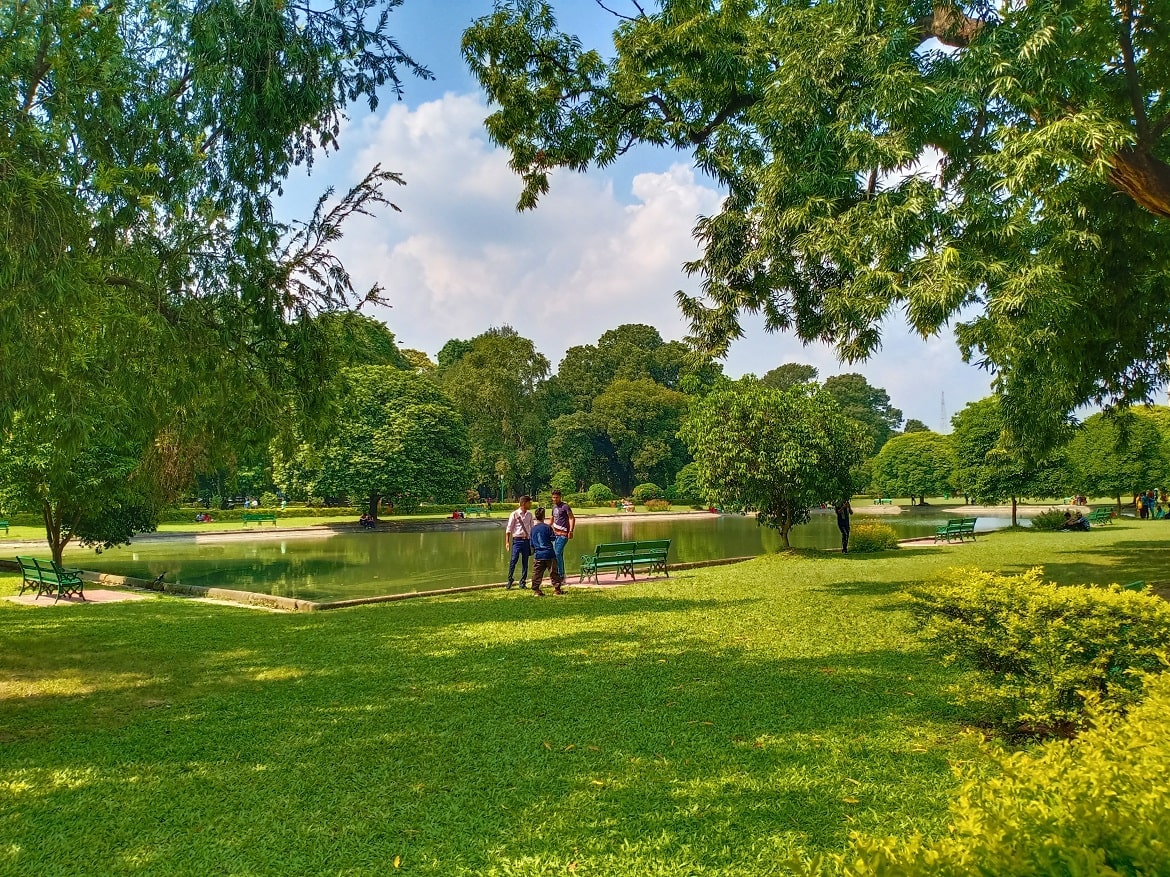Tackling Climate Risks by Promoting NBS in Indian Cities

This blog first appeared on NIUA.org on July 28, 2021.
Adapting to climate risks is imperative for cities. Cities are the epicentre of life-shortening pollution, dwindling water supplies, deadly heatwaves, natural disasters, and climate change. Indian cities like New Delhi, Mumbai and Chennai are among the most risk-laden cities across the globe. They have recognized the impact of climate associated challenges and have been implementing and identifying interventions that will help long-term preparedness to climate risks.
For example, the heat action plan (HAP) developed by the Ahmedabad Municipal Corporation in 2013 (updated in 2019) brought in institutional, infrastructure and behavioural changes. HAP is intended to provide immediate and long-term preparedness measures against heat risk and support overall well-being.
Over the past decades Indian cities have experienced a surge in urban development and simultaneous environmental loss. Bengaluru, for example, has seen a 925% increase in built-up area between 1973 and 2013, with a decrease in green cover from 68% to 14%, and blue features from 3% to less than 1%.
There is an opportunity now to realign our strategy towards climate change and enforce green recovery from the Covid-19 pandemic. Cities like Stuggart, Schenzhen are implementing integrated solutions incorporating Nature-based Solutions (NBS) to create liveable and resilient cities. In the last decade NBS has emerged as a cost-efficient measure in the field of disaster risk reduction and climate change adaptation, to compliment the limitations of grey-engineered approach.
Evidence suggests NBS can reduce the vulnerability of social-ecological systems to environmental shocks and changes in three ways. First, by reducing exposure to climate hazards; second reducing sensitivity to adverse impacts; and third building adaptive capacity. However, it is to be noted that NBS is not a substitute for the rapid phase out of fossil fuels. It involves a wide range of ecosystems and not just forests. NBS implementation process must be inclusive of local communities and their cultural ecological rights and it should be designed to provide measurable benefits for biodiversity.
Three key recommendations that will enable cities to adapt to climate risks and build long-term resilience while promoting NBS are:
- Data-driven decision making: Co-creating and co-producing data through a participatory approach, to improve understanding of risks, hazards, and vulnerabilities. Ensuring effective communication of data and information to stakeholders.
WRI India and Kochi Municipal Corporation as a part of the Cities4Forests initiative aim to build awareness and demonstrate the importance of NBS across different stakeholder groups. A combination of data-science and participatory citizen-science approach (Mapathon) involving the mayor, councillors and resident welfare association representatives has been used to identify restoration opportunities. This, in turn, enables targeted interventions by multiple stakeholders to address heat risks in the city. - Integrated planning to build long-term resilience:
Stuttgart’s NBS policy is an example of integrated planning. The city is using a comprehensive set of NBS coupled with key regulatory policies and incentive schemes to improve and protect vegetated areas in the city. 60% of Stuttgart’s area is vegetated and 39% protected to preserve natural biodiversity. Tax incentives and strategic financial programs have contributed to the city’s green roof expansion strategy which in turn helps reduce heat and acts as absorption barriers for pollution. Climate mitigation and disaster control infrastructure can go a long way in reducing carbon footprint and reduce disaster impacts, while achieving national climate commitments. Integrating NBS in socioeconomic planning enhances disaster and climate resilience while providing basic services in the long run. - Governance and capacity building
By promoting a decentralised approach to risk and resource management through inter-organisational cooperation. Cities can effectively integrate NBS implementation in high-risk areas and leverage co-financing opportunities through CSR pools or civil society organizations. Localised solutions will improve access to physical and social infrastructure, especially to the poor and vulnerable neighbourhoods. The process of planning, designing and implementation of NBS must be inclusive and empowering, encouraging community stewardship for long-term operations and maintenance of new ecosystems.
Going Forward
Evidence suggests that extreme events and associated climate vulnerabilities are going to be more frequent in the coming years. The recent heat wave across Canada and catastrophic flood events in Germany are examples of how unprepared cities are in the face of rapidly changing climate. We need to focus on addressing challenges coherently with a long-term vision and not follow reactive measures.
Bigger cities in India like Mumbai, Chennai, Hyderabad etc., are moving towards extensive greening of spaces but the underlying social, political and economic impacts of such land-use change is yet to be fully understood. One example in India that stands out is the East Kolkata wetland serving as natural treatment ground for sewage and waste-water for the entire Kolkata city, supporting ecological habitat of several flora and fauna, acting as a carbon dioxide sink, help improving the overall quality of air. These also support livelihood of over one lakh local fishermen and serve as flood defence.
However, regardless of the vast potential mainstreaming NBS to address climate risk is undervalued as we have other pressing issues, like access to basic services and other developmental stressors to consider. Moving forward, the Indian policy space needs a transformative change to incorporate NBS to tackle climate risks at multiple levels.
Views expressed are the authors’ own.
